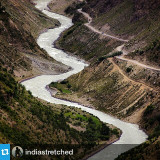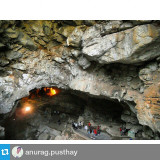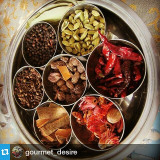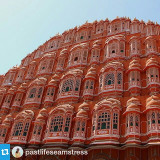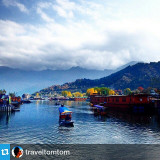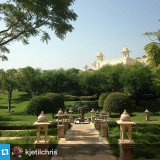Random image from our India photo collection
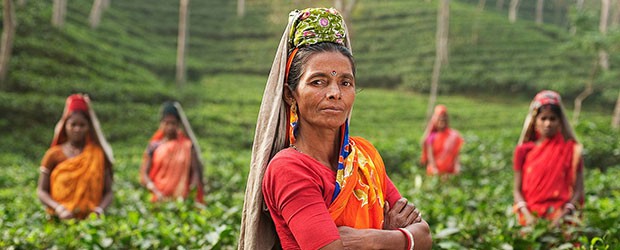
Rajasthan
Music & Dance
The music of the desert is vibrant with haunting rhythms. The music and dances of Rajasthan are invigorating, exciting, hypnotic and compelling… and very much a part of the eternal appeal of this strange and wondrous land.
The popular music and dance of this desert state is so enchanting, that it has won devoted admirers on an international scale. There are songs for every occasion, every mood, and every moment.
Of the many types of communities of professional folk musicians, Bhopas (singing priests), Nats, Bhat puppeteers, Kalbelias and Kanjars, who pursue music as a secondary vocation and operate in a rustic ambience, have made some vital contributions in this field.
Apart from classical forms like khayal and dhrupad, a unique form of singing called maand also flourished in the royal courts of Rajasthan. This was a semi-classical form with a milieu, text and structure of its own that had a similarity to both, the classical thumri and tappa forms of folk music.
A perfect complement to the music could be found in the lively folk dances of Rajasthan. Among the best known is the ghoomar dance in which the dancer pirouettes (performs a fast complete spin of the body, on the tip of his toes) gracefully and her full Ghaghra (skirt) flares out in a blaze of color and movement.
The tera tali performed sitting, is an exercise in rhythmic dexterity. It is performed by a group of two to three who have manjiras or metal cymbals tied to their limbs.
Performances open with the stirring call of the imposing trumpet, the bankia. Musicians use ancient, unsophisticated instruments that produce strangely mesmeric sounds. Twin flutes called algoza, the hypnotic Jewish harp or morchhang, the stringed instrument with a tinkling cluster of bells called the ravanhatta and the earthen pitcher or matka turned in the hands with amazing dexterity and used as a percussion instrument are some of these instruments.
The chang is yet another percussion instrument which is made of sheepskin pasted onto a large circular or octagonal wooden frame. This is used as a rhythmic accompaniment to the erotic songs and dances performed on the colorful festival of Holi. The khanjari is a tambourine used traditionally by the Kalbeliya women who belong to the snake charmer community.
Rajasthani dances are a spectacular celebration of life and color. The Kachhi-ghodi is a particularly vigorous dance in which the bridegroom's party boisterously sings folk ballads and stages a mock fight with much nimble side-stepping, sharp pirouetting and brandishing of swords. Dancers are ensconced within the figure of a horse with just their torsos showing.
A statelier dance is the ghair performed mainly in the Mewar region. Regal men in fulsome, gathered white ankle-length skirts and brilliant turbans swirl slowly in alternately clockwise and anticlockwise motions, clicking long, painted sticks with each other, the periodic clash of sticks creating its own fevered cadence.
The charee dance, on the other hand, is full of drama. In this, performers skillfully execute difficult choreographic patterns, balancing brass pitchers containing blazing cottonseeds on their heads.
The sapera (snake charmers) dance of the Kalbelias, a snake charmer community, is sensuous and mesmeric.
The gavvi dance performed by males in honor of Lord Mahadeo, an incarnation of Lord Shiva and his consort, the spectacular community dances of the Meena and Bhil tribals, the meaningless unrestrained dances of the dhobi (washerwomen) and the raasmandal performed by enormous groups of villagers in honor of Lord Krishna in the Krishna country of Karauli constitute some of the other dance forms of Rajasthan.
Go back
The popular music and dance of this desert state is so enchanting, that it has won devoted admirers on an international scale. There are songs for every occasion, every mood, and every moment.
Of the many types of communities of professional folk musicians, Bhopas (singing priests), Nats, Bhat puppeteers, Kalbelias and Kanjars, who pursue music as a secondary vocation and operate in a rustic ambience, have made some vital contributions in this field.
Apart from classical forms like khayal and dhrupad, a unique form of singing called maand also flourished in the royal courts of Rajasthan. This was a semi-classical form with a milieu, text and structure of its own that had a similarity to both, the classical thumri and tappa forms of folk music.
A perfect complement to the music could be found in the lively folk dances of Rajasthan. Among the best known is the ghoomar dance in which the dancer pirouettes (performs a fast complete spin of the body, on the tip of his toes) gracefully and her full Ghaghra (skirt) flares out in a blaze of color and movement.
The tera tali performed sitting, is an exercise in rhythmic dexterity. It is performed by a group of two to three who have manjiras or metal cymbals tied to their limbs.
Performances open with the stirring call of the imposing trumpet, the bankia. Musicians use ancient, unsophisticated instruments that produce strangely mesmeric sounds. Twin flutes called algoza, the hypnotic Jewish harp or morchhang, the stringed instrument with a tinkling cluster of bells called the ravanhatta and the earthen pitcher or matka turned in the hands with amazing dexterity and used as a percussion instrument are some of these instruments.
The chang is yet another percussion instrument which is made of sheepskin pasted onto a large circular or octagonal wooden frame. This is used as a rhythmic accompaniment to the erotic songs and dances performed on the colorful festival of Holi. The khanjari is a tambourine used traditionally by the Kalbeliya women who belong to the snake charmer community.
Rajasthani dances are a spectacular celebration of life and color. The Kachhi-ghodi is a particularly vigorous dance in which the bridegroom's party boisterously sings folk ballads and stages a mock fight with much nimble side-stepping, sharp pirouetting and brandishing of swords. Dancers are ensconced within the figure of a horse with just their torsos showing.
A statelier dance is the ghair performed mainly in the Mewar region. Regal men in fulsome, gathered white ankle-length skirts and brilliant turbans swirl slowly in alternately clockwise and anticlockwise motions, clicking long, painted sticks with each other, the periodic clash of sticks creating its own fevered cadence.
The charee dance, on the other hand, is full of drama. In this, performers skillfully execute difficult choreographic patterns, balancing brass pitchers containing blazing cottonseeds on their heads.
The sapera (snake charmers) dance of the Kalbelias, a snake charmer community, is sensuous and mesmeric.
The gavvi dance performed by males in honor of Lord Mahadeo, an incarnation of Lord Shiva and his consort, the spectacular community dances of the Meena and Bhil tribals, the meaningless unrestrained dances of the dhobi (washerwomen) and the raasmandal performed by enormous groups of villagers in honor of Lord Krishna in the Krishna country of Karauli constitute some of the other dance forms of Rajasthan.
Go back


